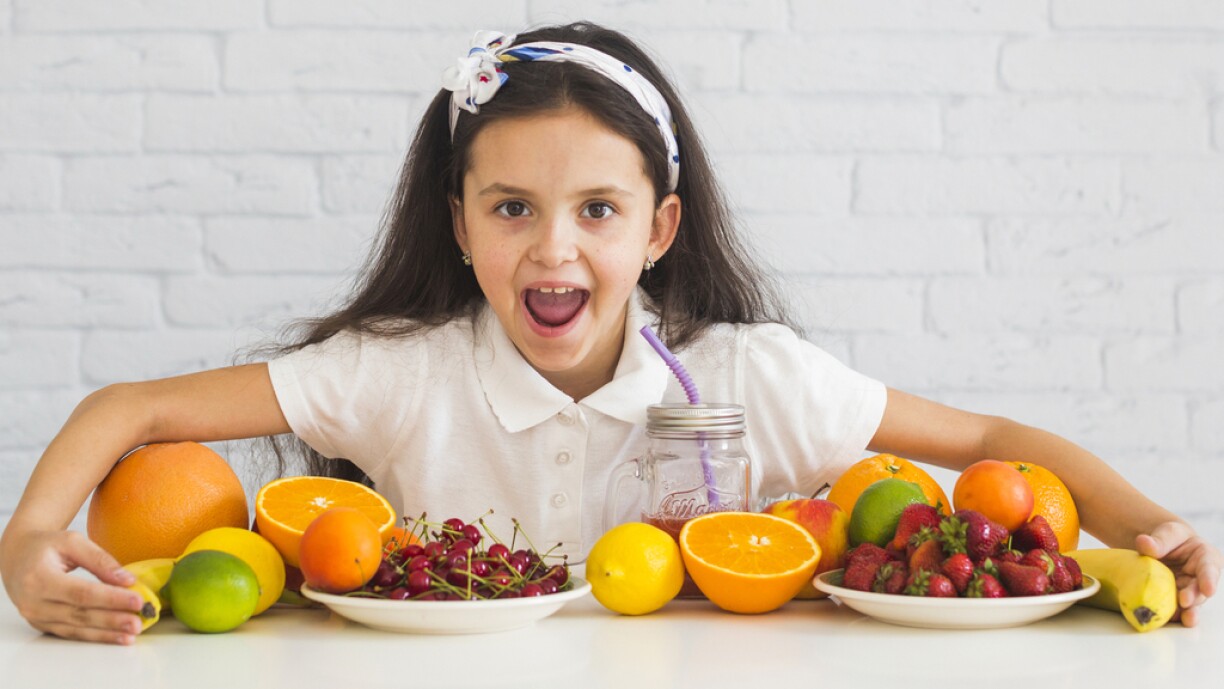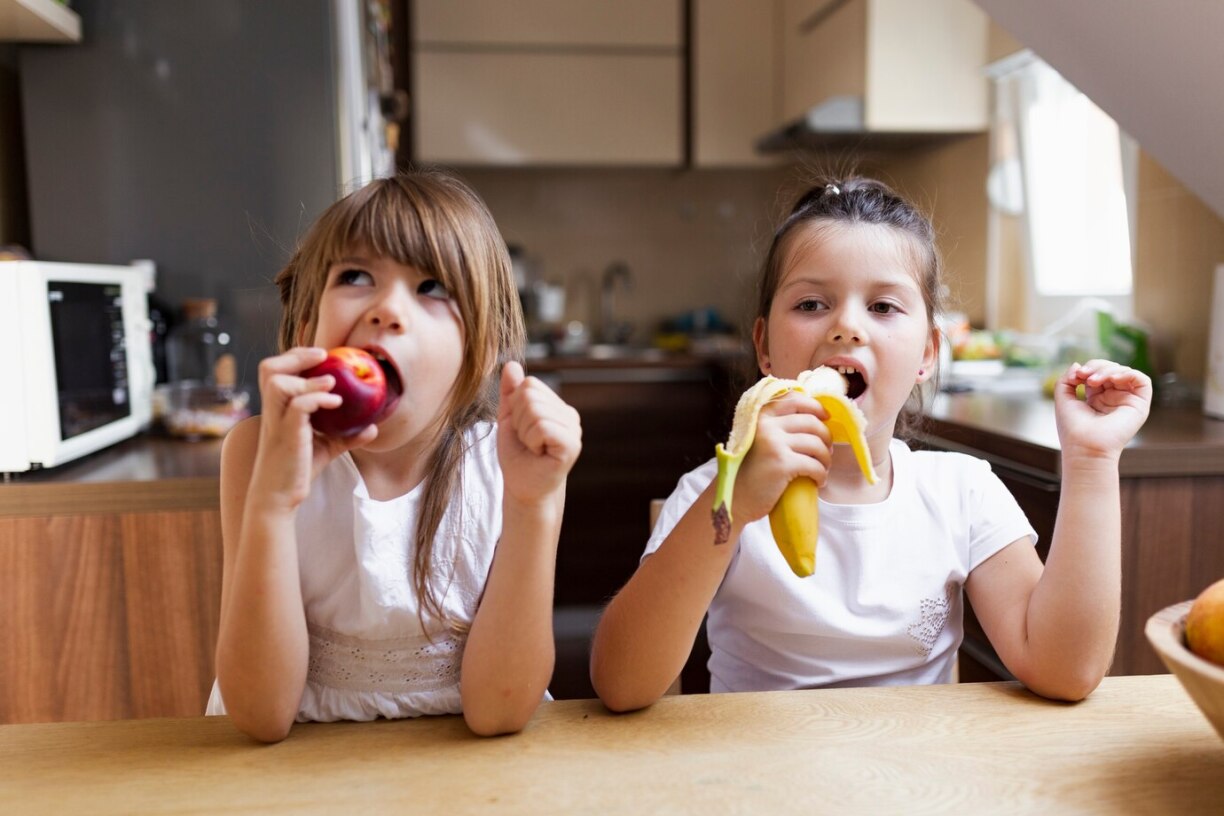
As adults welcomed the arrival of a new year with goals and resolutions, many of which focus on healthy eating, is it time to consider your child’s diet?Sugar is a type of carbohydrate, found in many foods and beverages. We all need a certain amount of sugar in our diets for our bodies to function effectively. However, sugar is a leading cause for concern when it comes to health issues such as weight gain, cardiovascular disease, diabetes, and tooth decay. A recent study showed that children who were subjected to sugar restrictions in their first 1000 days of life, including in utero, had a much lower risk of developing diabetes and high blood pressure in adulthood.
To analyse your child’s sugar consumption, it’s important to understand the different types of sugar.
Natural sugars: naturally present in fruits, vegetables, milk
In the context of a balanced diet, children are encouraged to eat lots of fruit and vegetables to promote gut health and boost immunity. Those which contain high levels of natural sugar such as grapes, bananas and mangoes are nevertheless high in vitamins and minerals, antioxidants or fibre. It’s the free sugars that parents need to be concerned about, and these are found in a huge variety of food and beverages.
The World Health Organisation (WHO) advises parents to limit their child’s consumption of free sugars to 10% of their overall calorie intake. This equates to a maximum of 25g of free sugar per day. It is recommended that children younger than two years old do not consume any free sugars.The challenge is that free sugars can be very difficult to avoid as they seem to be everywhere – even in places we least expect it. For many parents, it can be difficult and time-consuming to keep track of their children’s sugar intake. A busy family’s reliance on processed or ultra processed foods can lead to a higher level of sugar consumption, as free sugars are often ‘hidden’ in ready meals, pizzas, processed meats, and sauces.
Information is power. If you’re armed with the facts, you’re in a much better position to make informed decisions. For those of you with a bit of time on your hands, you might like to stroll along the supermarket aisles in a leisurely fashion, checking the nutritional value labels on things you’d normally add to your trolley without a second thought. Failing that, here is a simple guide on a few common items with a high sugar content – that you might want to avoid or restrict.
| Food or drink | Average sugar content in grammes |
| Fizzy drink 250ml | 27 |
| Energy drink 250ml | 27 |
| Chocolate bar 45g | 20 |
| Vanilla milkshake 250ml | 20 |
| Ice cream scoop 60ml | 15 |
| Waffle 50g | 15 |
| Oat and honey cereal bar 40g | 11 |
| Flavoured drinking yoghurt 100ml | 11 |
| Fruit juice 100ml | 10 |
| Chocolate cookie 15g | 10 |
| Fun size bag of sweets 16g | 9 |
| Baby fruit purée jar 100g | 9 |
| Madeleine 25g | 7 |
| Flavoured yoghurt pot 50g | 6 |
| Chocolate cereal 30g | 6 |
| Pain au chocolat 45g | 6 |
| Baby biscuits 20g | 4 |
It’s a bit overwhelming when you realise that even the things you thought were healthy(ish) are packed full of hidden sugars. Like fruit purée – it’s still fruit, right? In fact, baby food can be one of the worst offenders, even if it’s branded as “organic” or marked as having “no added sugar”. And it’s not easy to cut down on the things your children love and are familiar with. So, below are a few easy, tasty swaps to ensure you don’t go over the daily sugar recommendation.
| Avoid | Try |
| Chocolate cereal | Wheat biscuits |
| Flavoured or sugary cereal | Low sugar muesli with dried fruit |
| Microwaveable porridge packs | Plain porridge with honey or fruit |
| Flavoured yoghurt | Natural yoghurt with reduced sugar jam |
| Croissants and pastries | Wholewheat or sourdough toast and jam |
| Avoid | Try |
| Chocolate biscuits | Plain biscuits |
| Donuts | Low sugar cake or fruit tart |
| Pasties | Natural crêpe with jam or maple syrup |
| Cream cake | Plain muffin or scone with fromage frais |
| Milkshake | Homemade fruit smoothie |
| Cereal bars | Flapjack or fruit and nutbars |
| Fruit purée or compote | Fresh fruit pieces or slices |
| Sugar popcorn | Plain popcorn or rice cakes |
| Avoid | Try |
| Fizzy drinks | Water with fresh fruit infusion |
| Flavoured drinking yoghurt | Natural drinking yoghurt |
| Juice | 50/50 water and juice mix |
| Milkshake | Milk |
Don’t forget the power of a pretty plate – arranging food into a colourful pattern or a funny face is usually a winner. It might just help younger children forget that they’re eating a bowl of fruit rather than a doughnut!
Homemade is always better than shop bought. Why not try out some quick and easy low sugar recipes. Stock up on honey, maple syrup and dates so you have some convenient substitutes for refined sugar.
If you’re short on time, try batch cooking some healthy treats. Oat flapjacks, low sugar banana bread, no bake chocolate balls, coconut bars, yoghurt muffins or sugar free scones and biscuits will keep for a week in the fridge or the cupboard.
Involve your child in the food preparation process. The sense of pride and ownership will encourage them to eat the food they have helped create.
Drinking water is one of the easiest ways you can reduce sugar in your child’s diet. Try adding ice cubes, a slice of lemon or a handful of berries to the water so your child finds it more appealing.

The Luxembourgish Ministry of Health has a dedicated organisation, GIMB (Eat Healthy, Be More Active), which offers ideas of how to organise and plan children’s meals to provide a healthy and balanced diet
UK National Health Service (NHS)
Sugar Calculator and Food Facts
Sugar by Half Calculator